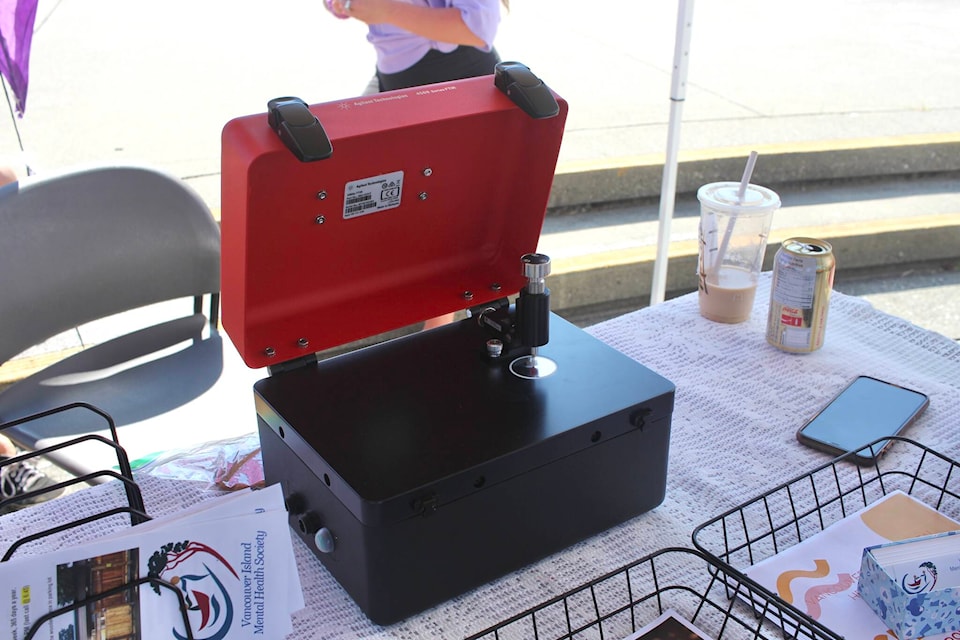Last year 27 people living in the Greater Campbell River area died from using toxic drugs, a new high for the region.
“It’s immensely tragic that this has been going on for over seven years now and we still haven’t made a dent in the crisis,” said Gwen Donaldson of the Campbell River Community Action Team (CAT). “It’s very very sad and it’s and it’s very very tragic because you feel for all these community members.”
According to a Jan. 31 report from the B.C. Coroners Service (BCCS), 27 people died from toxic drugs in the community. That is up one from the year prior, when 26 people lost their lives. BCCS provides the death rates measured per 100,000 people, which helps with comparisons of communities of different sizes. Last year, that figure for Campbell River was 55.5, which is up from 52.2 the year before. It is also the highest year since 2017, which was at 42.2. The numbers spiked in 2021 after a slight drop through the end of the last decade.
“It’s just, it’s a struggle right? I mean we’re now at a place where we’ve kind of like started to really put COVID in the rear, we’ve got successful interventions,” Donaldson said. “We have not found the successful interventions for this yet, or we haven’t invested in them or seen them through yet.”
Comparable communities using the 100,000 people metric include Greater Victoria at 53, Kettle Valley at 54.4, Penticton at 58.8 and Abbotsford at 52.1. The Comox Valley was at 48.6. Vancouver, Terrace and Merritt topped the list at 470.8, 110.5 and 92.6 respectively, though the absolute numbers varied greatly between those communities.
“North Island as a whole is tremendously under-served by the health system. Campbell River has the most northerly overdose prevention site on the Island,” she said. “So anybody using substances north of us if they want to access it overdose prevention site would not be able to do without coming to Campbell River. Um, which I think leads to kind of that under service.
“There is an incredible kind of constellation of services in Victoria. It’s still not enough because we don’t have all the treatment and recovery services. But but the further north you get out of the urban centers you do get less service.”
Provincially, most of those who died were between the ages of 40 and 49 (75.3 per 100,000) and 50-59 (also 75.3 per 100,000). In total, 1,042 in that age range passed away due to toxic drugs, which is just over 45 per cent of all drug-related deaths in the province. The vast majority of people who died were also male (1,784 out of a total 2,272).
“One thing that comes up in the coroners report is that over 50 per cent of people die in private residences,” Donaldson said. “There’s always the visible crisis that we see downtown, but there’s a very, very invisible crisis that plays out in our homes and in our communities.”
The report comes out as laws are changing both at the federal and local levels. As of Tuesday Health Canada allows British Columbians aged 18 or older to carry up to 2.6 grams of street drugs for personal use.
“When we reduce the justice involvement in this crisis, it is good in the sense that that we do move it more into a public health lens,” Donaldson said. “I think that this is a good kind of public move to start really looking at shifting the focus of this crisis.”
Locally, the City of Campbell River also passed a bylaw to address the crisis. The Campbell River bylaw bans the use of drugs in public spaces.
“So the province has kind of tried to move this from the justice lens into the public health sphere. And now what we’ve done with this bylaw is inserted a municipal justice sphere. So now we’re kind of putting the responsibility on to our own municipal bylaw officers.
“It’s just it’s such a complex public health concerm and it takes so much more than bylaw and justice,” Donaldson said. “we all need to work together … it just feels like kind of increasing the silos that we already have.”
”There’s no one right way to address substance use, there’s no one way right way to recover from a mental health and substance use issue. And there’s no one right intervention that we’re going to find,” she said. “We (need to be able to) meet people where they are with compassion because we can just keep fighting each other. What it feels like is that this negativity builds up and it creates a very kind of toxic place, so nobody feels safe.”
Resources for those using drugs or those with family or friends who use drugs can be found at the Community Action Team website: www.communityactioncr.ca/services.
